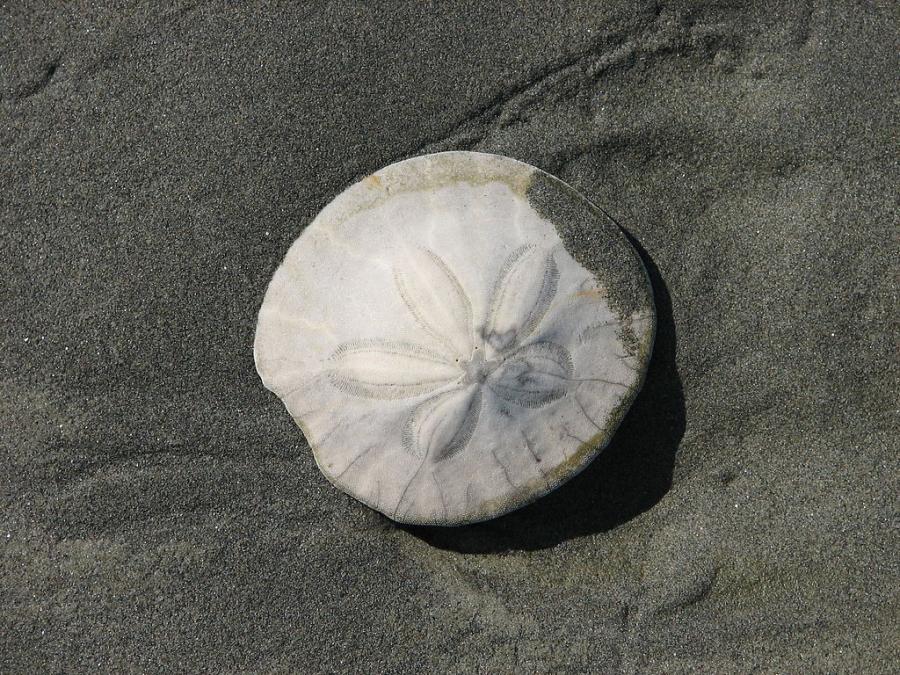Eccentric Sand Dollar (Dendraster excentricus)
One of the most characteristic animals of clean sand bottoms in quiet bays everywhere on the Pacific Northwest coast is this flattened relative of the sea urchins. In some sandy areas, these echinoderms are so common as to virtually cover the bottom.

KINGDOM Animalia - PHYLUM Echinodermata - CLASS Echinoidea - ORDER Clypeasteroida - FAMILY Dendrasteridae
This disk-shaped animal grows to about 10 cm in diameter and is gray to brown or reddish in color. The bottom is flattened, the top slightly convex.
The test is covered with a profusion of tiny spines that are visible only at close range. The mouth is centered on the under (oral) side, and the anus, which would be on the upper (aboral) side in other echinoids, has moved over evolutionary time to the posterior edge of the disk.
Sand Dollars move slowly across and through the sand by the action of their spines rather than their tube feet, which might not find much purchase on sand grains. The animal can literally slice its way into the sand by slowly moving its anterior edge back and forth. It remains partially exposed, and detritus that falls onto the aboral side is carried by tracts of cilia to and around the margins, then to the mouth by more cilia on the oral side.
The very small particles of organic matter taken in by the mouth are passed through the Aristotle’s lantern, an internal structure much smaller than the ones in sea urchins, and into the gut, which winds around the sand dollar just inside its margins.
In dead specimens, with spines absent, the aboral side has an obvious five-parted pattern like a flower. These are the petaloids, the ambulacral grooves prominent on the underside of sea stars and carried over to the upper side in echinoids. They house tiny tube feet or podia, which have been modified into respiratory organs for gas exchange. The oral side has a flowerlike pattern as well, and its podia are modified to create a wave to transport food particles to the mouth.
Sand dollars are dioecious, with separate sexes. They reproduce like other urchins, shedding sperm and eggs into the water column. The larva that hatches from a fertilized egg is free-swimming, a funny-looking five-spined creature like an inverted sea star that is called an echinopluteus. It feeds for a few months floating around in the plankton, then the adult skeleton begins to develop and it settles to the bottom and metamorphoses into a bona fide sand dollar (or sand penny at that point).


